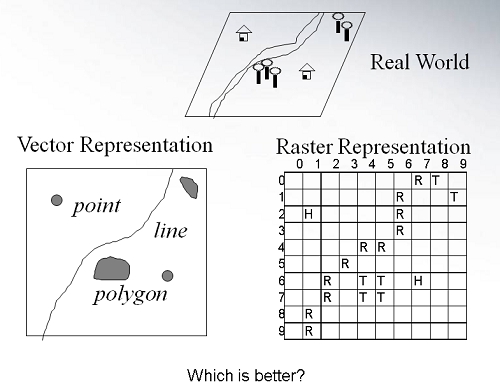

Thus, the raster above would be represented as: Common raster compression algorithms include run-length encoding (RLE), JPEG, LZ (the basis for PNG and ZIP), Lempel–Ziv–Welch (LZW) (the basis for GIF), and others.įor example, Run length encoding looks for repeated values in the array, and replaces them with the value and the number of times it appears. The most common strategy is to look for patterns or trends in the pixel values, then store a parameterized form of the pattern instead of the original data. This has led to multiple approaches to compressing the data volume into smaller files. High-resolution raster grids contain a large number of pixels, and thus consume a large amount of memory. Headers may also include the number of rows, georeferencing parameters for geographic data, or other metadata tags, such as those specified in the Exif standard. To reconstruct the two-dimensional grid, the file must include a header section at the beginning that contains at least the number of columns, and the pixel datatype (especially the number of bits or bytes per value) so the reader knows where each value ends to start reading the next one. For purposes of visualization a lookup table has been used to color each of the cells in an image D. In the example at right, the cells of tessellation A are overlaid on the point pattern B resulting in an array C of quadrant counts representing the number of points in each cell.

The most common way to do this is a row-major format, in which the cells along the first (usually top) row are listed left to right, followed immediately by those of the second row, and so on. To store the data in a file, the two-dimensional array must be serialized. A raster data structure is based on a (usually rectangular, square-based) tessellation of the 2D plane into cells, each containing a single value. Most computer images are stored in raster graphics formats or compressed variations, including GIF, JPEG, and PNG, which are popular on the World Wide Web. Using a raster to summarize a point pattern. The digital sensors used for remote sensing and astronomy are often able to detect and store wavelengths beyond the visible spectrum the large CCD bitmapped sensor at the Vera C. Rubin Observatory captures 3.2 gigapixels in a single image (6.4 GB raw), over six color channels which exceed the spectral range of human color vision.Īpplications Image storage

Most modern color raster formats represent color using 24 bits (over 16 million distinct colors), with 8 bits (values 0–255) for each color channel (red, green, and blue).
#Difference between vector and raster data in gis full
Common pixel formats are binary, gray-scale, palettized, and full-color, where color depth determines the fidelity of the colors represented, and color space determines the range of color coverage (which is often less than the full range of human color vision). Each raster grid has a specified pixel format, the data type for each number. For most images, this value is a visible color, but other measurements are possible, even numeric codes for qualitative categories. Raster or gridded data may be the result of a gridding procedure.Ī single numeric value is then stored for each pixel. The size of each square pixel, known as the resolution or support, is constant across the grid. In digital photography, the plane is the visual field as projected onto the image sensor in computer art, the plane is a virtual canvas in geographic information systems, the plane is a projection of the Earth's surface. The fundamental strategy underlying the raster data model is the tessellation of a plane, into a two-dimensional array of squares, each called a cell or pixel (from "picture element").


 0 kommentar(er)
0 kommentar(er)
